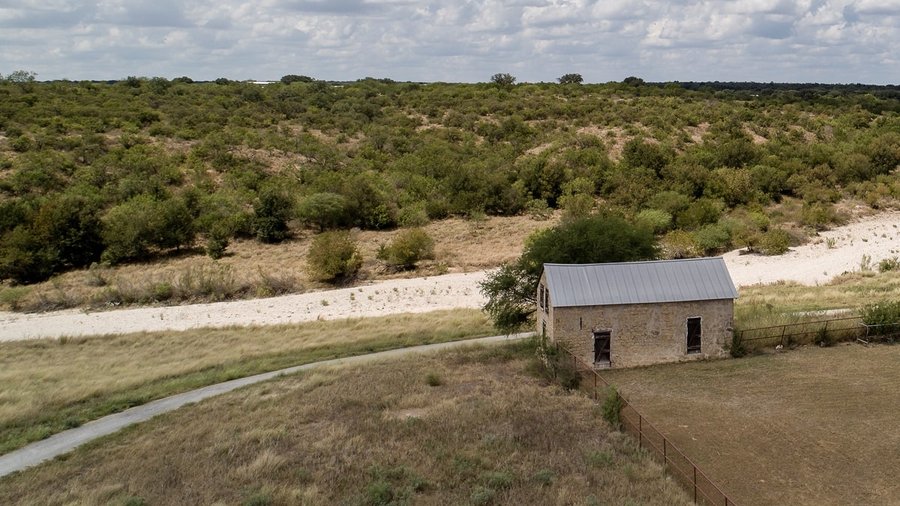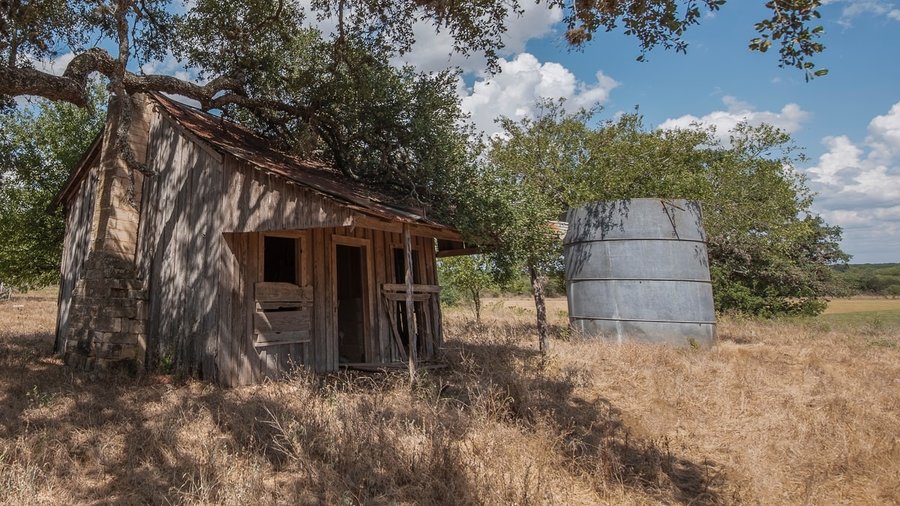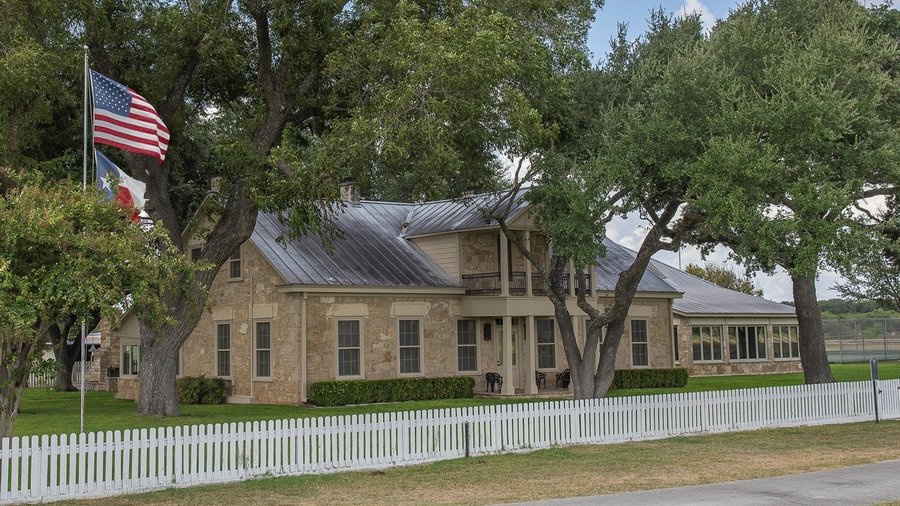Imagine it is 1865 and a 19-year-old young man is camping and exploring the untamed frontier in the rolling hills above D’Hanis with his two best buddies. The weather is mild, and the hunt has been an adventure of searching the wide-open country for livestock. The ammunition and energy are all but spent. While filling their bellies with campfire food, the trio is suddenly attacked by a small band of Comanche riding horseback and shooting arrows into their midst.
The teens had one gun and one bullet, and only one of them would live to tell the story. George Miller was killed and Hubert Weynand was captured, never to be seen again by his friends and family. The one lucky survivor was August Rothe, one of four Rothe brothers who helped settle D’Hanis.
Today, 154 years later, there are approximately 500 living descendants of the four brothers and their sister. August’s grandson Billy and his wife Rosie had seven children. We interviewed two of them – Tom and Rick – to learn more about their branch of the Rothe family tree, and their connection to their ranching heritage. Although one of the seven siblings has passed, the others and their mother Rosie still reside within 15 miles of one another on or close to the original 100,000 acres of the Rothe Brothers Ranch.
“The four original Rothe brothers succeeded because they stayed together and continued doing business together even after their father died in 1872,” explains Tom. August Rothe was 7 when he and his three older brothers and younger sister moved to Texas in 1854. Their mother Emilie died 14 days after their arrival and is buried at the confluence of Geronimo Creek and the Medina River under a huge pecan tree.
August and his four siblings were raised by their father Heinrich. The widower and his five motherless children quickly figured out how to thrive in the rough open ranges along the Hondo and Seco creeks. They lived through the era of fence wars, endured six-month-long cattle drives to Kansas seven times, and survived many run-ins with hostile Native Americans.
“They came to Texas at an opportune time and took advantage of the availability of cheap railroad land. They plowed everything they made back into the herd and buying more land. We are enjoying the fruits of what they did. They bought cattle locally for around $5 a head and sold them for $30-40 in Kansas; that’s one way they improved their holdings. They were brave, hard-working, and intelligent.” Tom elaborates. “I tell my kids today, invest in land. Money, you’ll fritter away, so we always bought more land any time we had the money.”
By the late 1800s the Rothe brothers had amassed 100,000 acres of land in Bandera and Medina counties and 16,000 head of cattle; and had 85,000 acres of their grassland fenced.

Tom, a practicing attorney, admits, “I’ve always dreamed of just doing the cattle business.” His love of the land and livestock started with his grandfather’s visit every morning at the old ranch house where Tom and his siblings grew to adulthood. The talk of the ranch and their plans for the day were an integral part of morning coffee and breakfast. Tom recalls his grandfather telling him, “When I was 10 years old, I’d ride my horse in belly-deep grass from D’Hanis to the ranch headquarters. We didn’t have the brush and mesquite that’s everywhere now. We’ve overgrazed the land and overused it.”
The original acreage of the Rothe family has dwindled due to the immense number of heirs, though the four brothers operated together until 1910. Some of the rocky ranch land was not the rich grazing land that other parts were. The brothers made a verbal agreement in the late 1800s dividing their land in an equal manner based on the productivity of the ranch as opposed to sheer size.
Today, Tom and his wife Marcy run about 150 head on 3,400 acres. Their current holdings include Marcy’s family land, which was part of the original Rothe land her grandfather purchased in the 1920s; land the couple purchased from other Rothe descendants; and Tom’s land. Fascinated with old maps, Tom has a progression of them framed on his wall. “I like how you can see how the ranch has changed through the years,” he says.
Turning his attention to ranch life, Tom speaks of everything from feeding cattle to visions for the future. “We don’t feed hay, only some supplements, and we try not to overstock.” he says. “We work hard to involve our children and grandchildren. A connection to the land is what it takes for the ranch to continue on into the next generation.” Tom continues, “The term ‘sundown rancher’ applies to me as I don’t usually get out to check the cattle, water, and fences until about sundown. I have enjoyed every bit of the ranch life. Marcy has been understanding and supportive of that lifestyle. The cows hear my white pick-up, and all I have to do is honk the horn and the cows come running for cake. I get friends to ride along, but lately I believe they think I just take them along to open the gates.”
Tom’s brother Rick, a retired banking executive, and Rick’s wife Jennifer, a retired certified public accountant, own about 200 acres. They built a beautiful home nestled three miles north of D’Hanis on a part of the original plat. They lease their fenced and improved pasture land for cattle grazing to Rick’s cousin who is married to Jennifer’s sister.
Memories and traditions play an important role in the Rothe family history. Tom and Rick’s father, Billy, had a penchant for having a good time where ever he found himself. “My dad made everything we did into a party. Killing pigs and making sausage was a party. You worked cattle and had fun while you did it. You chopped brush and there was a competition to see who would finish first.” Tom recalls.
A family trip to Europe rings clear in Jennifer’s mind. “We went back to Alsace, France and visited the little town of Warmensteinach, where the original Rothe home is located. Billy was the toast of the town with relatives and friends alike,” Jennifer says. “Alsace felt just like being in D’Hanis with the traditions, customs, and love of life. Even the way they said things was the same.”

The family’s sense of humor and fun does not disguise their ability to work hard, be fiercely loyal to family, or quickly solve problems using their sharp minds and even sharper memories. “There is a strong connection to the land, and you can feel it when you’re here,” Rick says. “As far as we are concerned, this is the best place to raise children. With all the family connections, you are related to everyone, which we enjoy. Plus, you don’t worry about kids dating until they are old enough to drive out of town.”
An annual tradition that the family upholds, usually a week after the stock show in Medina County, is making sausage. One brother-in-law purchases the hogs that are sifted from the sale. The family then works together to kill and butcher the hogs for the sausage. Jennifer recalls her first sausage-making event, “I made it through the killing of the hogs, and after that Rick got the OK to marry me.” From cleaning the intestines for casing, butchering the hogs, mixing the family secret spices and getting the ratio of venison to pork just right, it takes all hands to complete the project in a day. Samples are cooked and the rest is packaged and divided equally. Grown children and college students living out of town return to help. It’s a party that no one wants to miss.
Another much-anticipated family event occurs every three years when many of the Rothe decedents reunite on a Saturday. The weekend has grown to include a “Cow Camp Cookout” that begins Thursday night with burying a calf head in a hole lined with hot coals, then covering it with heaping hot coals to cook in the ground all night long. On Friday night, the families contribute to the cookout featuring, among other delicacies, Tom’s Pan de Campo and Rick’s calf fries. They rotate which family will host the multitudes of cousins, siblings and parents ranging in age from newborns to 99-year-old youngsters.
“My grandchildren love standing on my north deck looking down on the hillside where you can see the rugged hill their great-grandfather August scrambled up while dodging arrows from three Comanche in close pursuit. You can see the remains of the Sauter house at Ft. Lincoln where he sought shelter, and ultimately met his future wife, Emma,” Tom says. “Mr. Sauter’s 2-year-old daughter crawled up into August’s lap while he told his harrowing story. Eventually that little girl grew up and became our great-grandmother.”
Not many families are able to trace their roots back as far or as accurately as the Rothe family, let alone still live on the land where it all started. It is this kind of South Texas heritage, though, that makes the people and this area that much more special.
For over 34 years, Uvalco Supply has been providing local landowners, farmers and ranchers with materials and supplies necessary for a wide variety of applications: game and livestock fencing, new and used pipe, structural steel, gates, cattleguards, livestock & equipment trailers, water system components and metal building materials.
